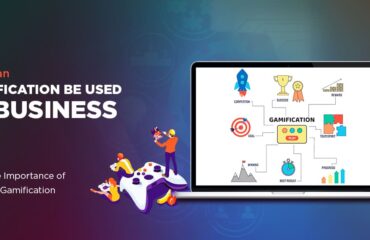
Gamification in ecommerce is becoming a popular strategy to engage customers, improve retention, and increase sales. By incorporating game-like elements into the online shopping experience, businesses can create more interactive and enjoyable environments that motivate users to take action, complete purchases, and share their experiences.
This blog explores the key strategies for effectively implementing gamification in ecommerce, including its benefits, best practices, and real-world examples.
What is Gamification in Ecommerce?
Gamification in ecommerce refers to the use of game mechanics and design principles—such as points, rewards, challenges, and leaderboards—to enhance the user experience and drive customer behavior. It aims to make the shopping journey more engaging and fun, encouraging customers to return to the site and make purchases. Instead of focusing solely on transactional relationships, gamification fosters an emotional connection with customers by offering incentives, recognition, and competition, which ultimately leads to increased engagement and loyalty.
Why is Gamification Important for Ecommerce?
The modern consumer is increasingly driven by experiences rather than just product offerings. As a result, ecommerce businesses are turning to gamification services to make shopping more immersive, rewarding, and memorable. Here are a few reasons why gamification is essential for ecommerce success:
Increased Engagement:
Gamification provides a fun and interactive shopping experience, leading to higher engagement rates. When customers enjoy interacting with a site or app, they are more likely to spend time browsing, which can result in more purchases.
Customer Retention:
Gamification encourages repeat visits through rewards, achievements, and ongoing challenges. Loyalty programs or point systems that offer discounts or free products can keep customers coming back for more.
Better Conversion Rates:
Incorporating game-like elements into the buying process can encourage users to take actions they might not have otherwise, such as completing a purchase, signing up for a newsletter, or sharing a product on social media.
Personalization:
Gamified experiences can be tailored to individual preferences. By using data to customize challenges or rewards, ecommerce businesses can offer a more personalized experience, which drives customer satisfaction and loyalty.
Social Sharing:
Many gamification elements, such as leaderboards and badges, encourage social sharing. When customers share their achievements or challenge their friends to beat their scores, they are inadvertently promoting the brand.

Key Strategies for Implementing Gamification in Ecommerce
Now that we understand the importance of gamification services, let’s dive into how to implement them effectively. Below are some strategies that can help ecommerce businesses incorporate gamification successfully.
1. Create Reward Programs
Loyalty programs are one of the simplest yet most effective forms of gamification. By rewarding customers for actions such as making purchases, writing reviews, or referring friends, you encourage repeat business and increase customer lifetime value. Points systems, where customers earn points with every transaction and redeem them for discounts or exclusive products, are a popular choice.
Example: Sephora’s Beauty Insider program offers members the opportunity to earn points on every purchase, which can be redeemed for beauty products, exclusive offers, or even special experiences like one-on-one consultations.
2. Introduce Challenges and Quests
Gamification thrives on challenges and goals. By introducing quests or challenges, you give customers a sense of purpose and motivation to return to your site. These challenges can be tied to specific actions like completing a purchase, signing up for a newsletter, or reviewing a product.
Example: Starbucks runs seasonal challenges where customers earn rewards for completing a series of actions, such as trying new beverages or visiting a certain number of stores within a set period.
3. Use Leaderboards and Social Sharing
Leaderboards tap into people’s competitive nature. By showing customers how they rank compared to others, you can motivate them to engage more with your ecommerce platform. For example, you could have a leaderboard for the top spenders or the most active participants in challenges.
Social sharing is another powerful element of gamification. You can integrate features that allow customers to share their achievements or progress on social media, which not only spreads awareness of your brand but also builds a sense of community.
Example: Nike’s NikeFuel challenges encourage users to track their physical activity and compete with others. The app integrates social sharing, allowing users to challenge friends and post their achievements on social media.
4. Incorporate Badges and Achievements
Badges and achievements are another great way to gamify the shopping experience. These serve as visual symbols of accomplishment and status. Badges can be earned for completing tasks, such as making your first purchase, spending a certain amount, or engaging with specific content.
Example: eBay uses a badge system to recognize top-rated sellers and buyers. Users feel proud of their badges, which not only motivates them to keep buying but also fosters a sense of trust within the community.
5. Implement Spin-to-Win or Scratch-Off Cards
Another fun and engaging ecommerce gamification tactic is implementing “Spin-to-Win” or scratch-off cards that offer customers chances to win rewards. These are particularly effective in boosting sales during special promotions or holiday seasons.
Example: ASOS has used spin-to-win campaigns during sales periods, where customers can spin a wheel to earn discounts or exclusive offers, incentivizing them to complete purchases.
6. Progress Bars and Milestone Tracking
Progress bars are a great way to gamify the shopping experience. By showing customers their progress toward a specific reward, you create a sense of achievement and urgency. This can be tied to spending goals, loyalty points, or any other metrics that are important to your business.
Example: Amazon’s “Prime Day” event often uses progress tracking, where customers see how much more they need to spend to unlock bigger discounts or exclusive deals.
Best Practices for Successful Gamification
While gamification can be highly effective, it’s important to implement it thoughtfully. Here are a few best practices to ensure the success of gamification services in ecommerce:
Ensure Relevance:
Make sure the gamification elements align with your brand and resonate with your target audience. The rewards and challenges should be meaningful and desirable.
Keep it Simple:
Avoid overwhelming customers with too many rules or complicated systems. Gamification should enhance the shopping experience, not complicate it.
Monitor Performance:
Continuously monitor the performance of your gamification strategies. Use analytics to track customer behavior and refine your approach as needed.
Offer Tangible Rewards:
Customers should feel that their efforts are being rewarded with something of value. Offering discounts, exclusive offers, or early access to products can create a stronger incentive.
Red Apple Technologies’ Role in Gamification for Ecommerce
Red Apple Technologies has been a key player in implementing gamification strategies for various industries, helping brands leverage game mechanics to enhance user experiences and drive business results. By focusing on customer engagement, Red Apple Technologies helps businesses create customized gamification solutions that align with their goals.
As Red Apple Technologies plans to expedite its gamification services across multiple industries, its focus will remain on helping businesses create personalized and engaging experiences that not only attract but retain customers. Our expertise in integrating complex game mechanics into ecommerce platforms positions them as a key partner for brands looking to leverage gamification for long-term success.
Conclusion
Gamification is a powerful tool for ecommerce businesses looking to engage customers, improve retention, and increase sales. By implementing strategies like loyalty programs, challenges, leaderboards, and rewards, brands can create fun and engaging experiences that keep customers coming back for more. Red Apple Technologies has demonstrated success in integrating gamification across industries, and our continued focus on delivering customized solutions will help more businesses harness the potential of gamification to drive growth and customer satisfaction.
To Have A Better Understanding On This Let us Answer The Following Questions
How can gamification enhance the customer experience in online shopping?
Answer: Incorporating gamification in e-commerce provides your customers with personalized discounts, time-bound offers, and other exciting rewards. This eventually tempts them to visit your online store frequently thereby boosting dividends and returns.
What are the key benefits of implementing gamification in e-commerce?
Answer: Introducing gamification in ecommerce allows you to boost your brand visibility, retain loyal customers, provide competitive advantage, and much more. But to implement gamification in e-commerce, seeking assistance from a leading app development agency like Red Apple Technologies will be very useful.
What gamification strategies are most effective for increasing customer engagement?
Answer: There are numerous strategies like announcing limited-time offers, awarding profile badges, incorporating dashboards, and so on to engage and retain customers throughout the year. But to obtain a satisfactory outcome, you should get help from a top-rated app development agency like Red Apple Technologies.






























 Book an Appointment
Book an Appointment Get Instant Project Estimation
Get Instant Project Estimation WhatsApp Now
WhatsApp Now






 Book An Appointment
Book An Appointment WhatsApp
WhatsApp







